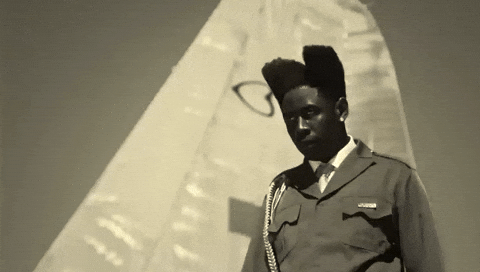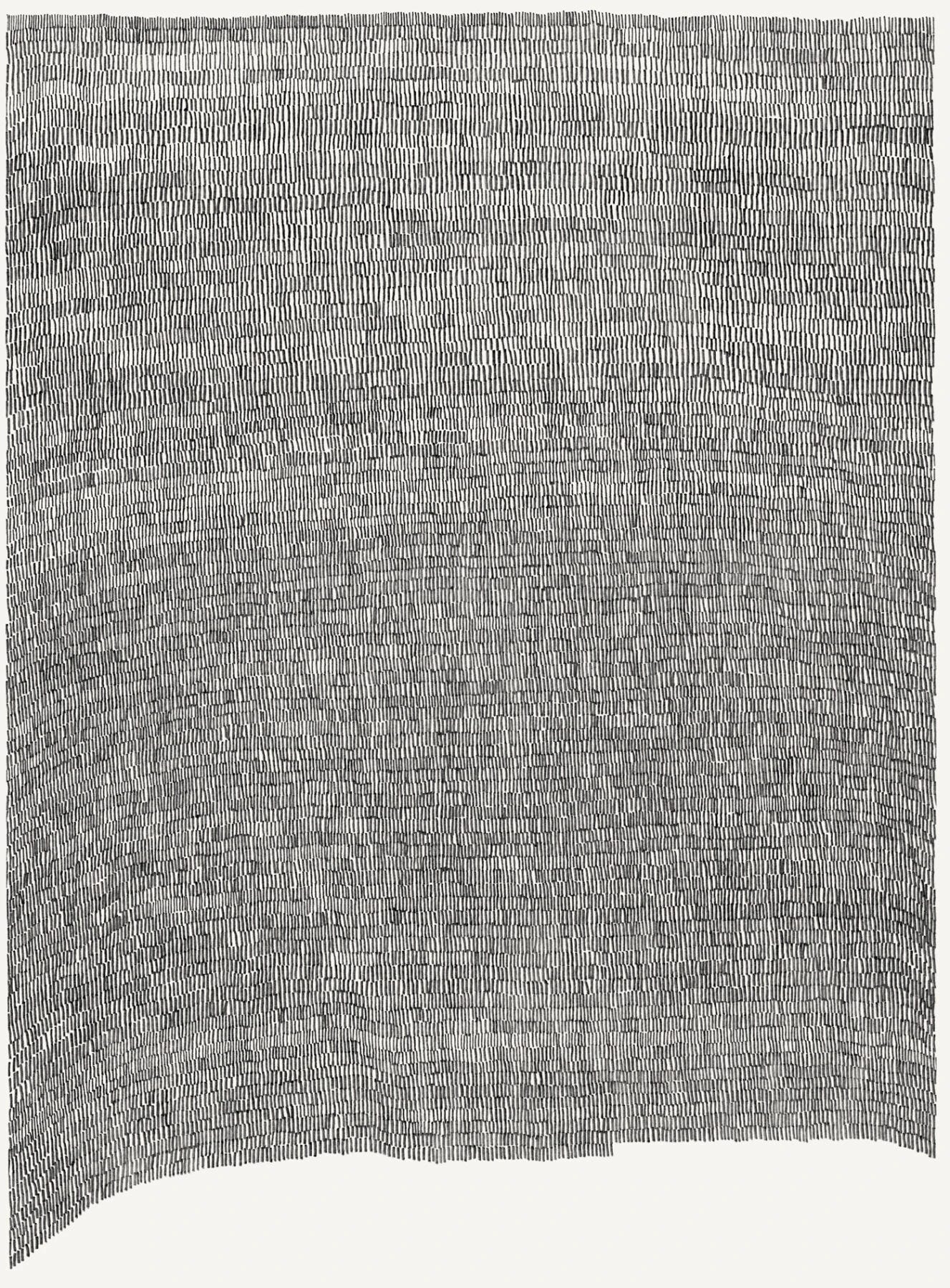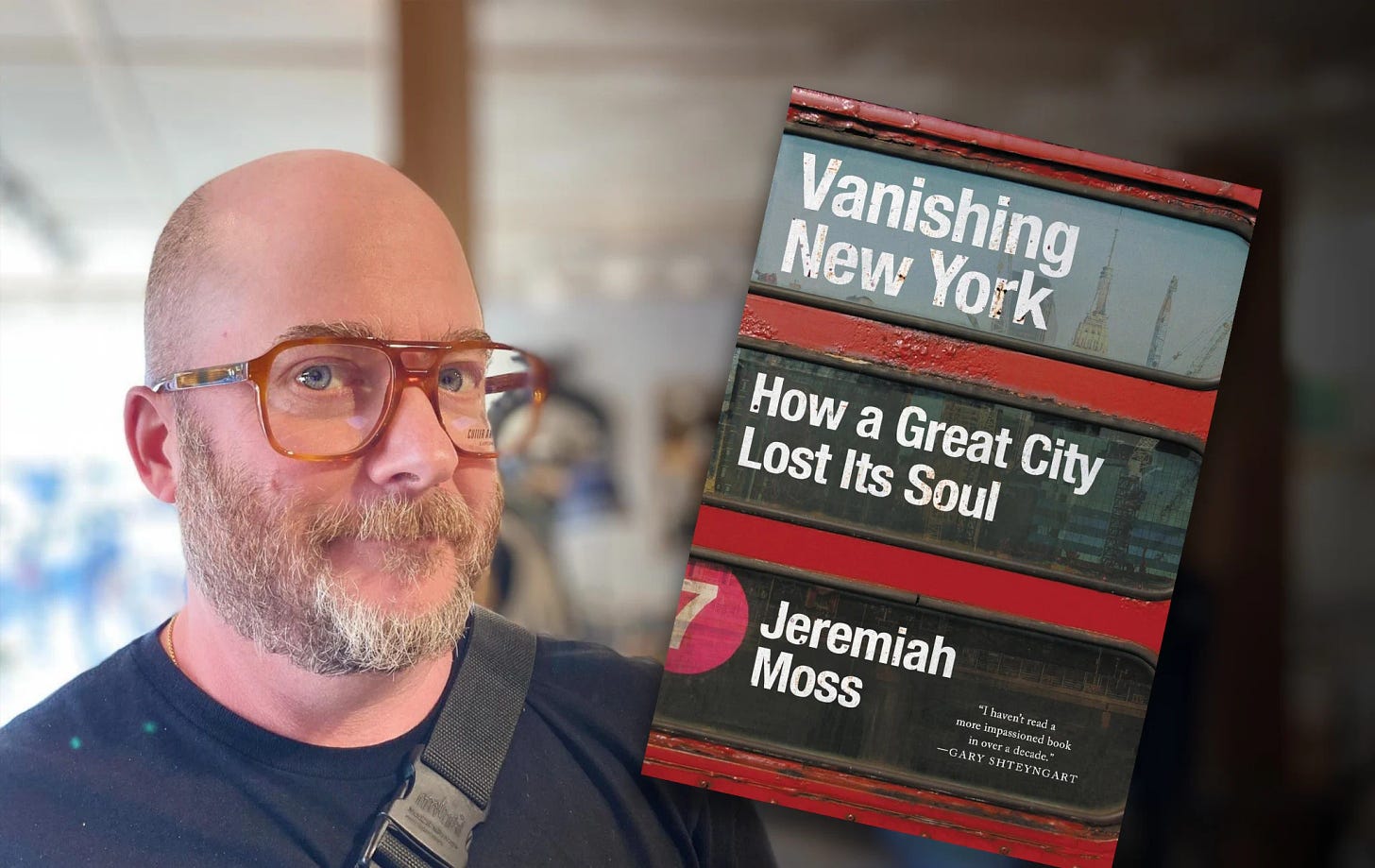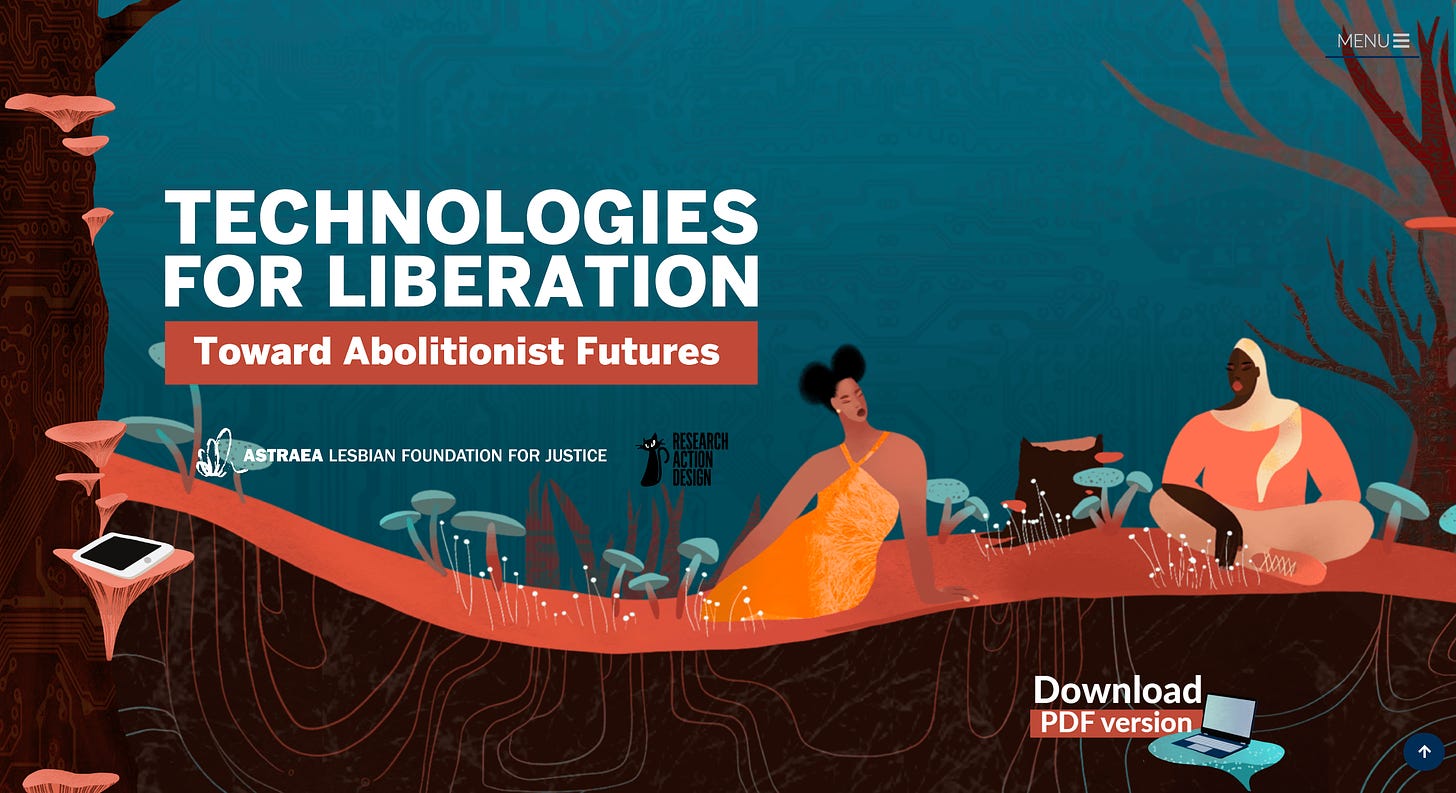🦤✨The Nexialist #0200
dendrochronology | more-than-human aesthetics | ecomodernism | program or be programmed | hypernormative | technologies for liberation | chromakopia
Welcome to your weekly source of crunchy brainsparks, the nexialist
hey, you! I hope this message finds you well! here we are at the 200th week of writing the nexialist, and it feels quite special! sometimes i can’t believe i’m doing this. thank you for being there on the other side reading, sharing, supporting, contributing and enjoying the brainsparks. if you can/want to show some financial support, consider going paid (or buying me a coffee).
exactly a year ago, i was in lisbon for the web summit; this week i’m in london for the first time, so it feels like a celebration (thank you, juan, for the gift!). i was having some kind of urban anxiety before coming to this huge city, but all is good. i’ve been having a blast, visiting museums, walking around and seeing the spots i had only seen on screen/pages before. it’s also impossible to navigate the city and all its rich details without thinking of all the invasion & exploitation colonial affairs, but still, the abundance of cultural activities is quite exciting. well.. i’ll leave you to this celebratory yet never ordinary edition. enjoy! 🫀✨
1 year ago » 👜✨The Nexialist #0148 : record-breaking renewables | deactivated power plant | portuguese time capsule: lena d’agua | saudade de você | oral
2 years ago » 🎪✨The Nexialist #0096 : Anne Imhof's YOUTH | infoxication | content capital | bread and circus | sportswashing | rainbow flag as the enemy | the law of the instrument
3 years ago » 🛠✨The Nexialist #0046 : Tentacular Thinking | Tools for A System Thinker | Find True Belonging | Art, Science, Futures Studies | Mystic Truths | Trusting your Destiny | No Filter | Masculinity
🌳dendrochronology
this essay by robert moor for emergence magazine appeared in my inbox the day before going to the natural history museum, where they have a huge piece of a giant sequoia that lived more than 1200 years, along with some of the historical events it “witnessed.” it was one of my favorite items in that museum. robert moor narrates how just being around these trees can pull as back to think about out relationship to time, nature, past and future.
Trees live inside our memory, and we, increasingly, live inside theirs. The science of dendrochronology is, simply put, the study of tree rings; the succession of growth patterns from each year can be “read” in order to intuit data about past epochs. (It was in pursuit of such data that, in 1964, a man famously cut down a gnarled bristlecone pine in the White Mountains of California, only to find that it was more than 4,900 years old; he had unwittingly cut down the oldest known tree on Earth.) One of the disturbing findings of recent climate science is the degree to which we are now being perceived by the trees; all around the world, the warmer climate we’ve created in the past century is clearly represented in the width of their rings.
it reminded me of the haunting vintage photos of loggers around the ancient trees they were cutting, like prizes, and how tree stumps even became dancefloors. quite barbaric when you think about it.
brainsparks: arboreal codes (tn#196), sumaúma(tn#122), ask nature (tn#86), shinrin-yoku (tn#137)
🦤more-than-human aesthetics
this interview with ‘ways of being’ author james bridle was shared at
and the brainsparks kept coming. the japanese magazine he is being interviewed for is focusing on gen-ai and art, so this discussion starts there, but it gets quite philosophical as well as practical. it connects so well to dendrochronology, on how our perception of time and space are quite limited when we think in terms of nature, but also the inorganic machines we are creating and using.The first thing to say about a non-human aesthetic would be that it can’t be an aesthetic, as we understand it, because aesthetics is about human sense and human judgment and experience. It’s about that we encounter, process, think of the world primarily in terms of appearances because we’ve got these great big eyes in the front of our head that are our primary sense. But that’s not how most of the universe encounters itself.
One of the things I always think about is the way, as humans, we live within such a narrow band of space time, in multiple ways. Within time, we live within the ticking of a clock. Our day-to-day time, the 24-hour cycle, and the cycle of our attention, which is also determined by things outside of us. We also live within the time scale of our lives, and we live within the time scale of our culture, what our culture remembers, which is a very small fraction of the history of the planet, let alone the universe, let alone, a number of other things. We live within this really narrow time and we can’t see that far ahead. Our experience is so bounded just by time. And then regarding space, we can see a little, we can hear a little, but that is limited by the frequencies we can perceive. There are huge numbers of beings that live on this planet that can hear things that we can’t hear. So even there, immediately, this other aesthetic, a non-human aesthetic, is bigger, broader, deeper, wider, stranger than a human aesthetic because it extends into all these different potential realizations, awarenesses, and therefore, things to process and therefore, things to think with. It increases the number of objects to think with.
brainsparks: more-than-human rights (tn#131), umwelt, non-human perceptions (tn#86), nature disconnection (tn#137)
🌐ecomodernism
this article by Rianne Riemens was shared at the syllabus: Fixing the earth: whole-systems thinking in Silicon Valley’s environmental ideology. i have not read it yet, but just the abstract made me want to include it here today. it tieds back to themes like greenwashing + technowashing, which we need to be critical of. in a data-driven culture, even the planet gets datafied.
Today, American tech actors express optimistic ideas about how to fix the Earth and halt climate change. Such “green” initiatives have in common that they capture the world in systems and propose large systemic, and mostly technological, solutions. Because of their reliance on techno-fixes, representatives of Silicon Valley express an ideology of ecomodernism, which believes that human progress can be “decoupled” from environmental decline. In this article, I show how “whole-systems thinking” has become a key discursive element in today’s ecomodernist discourses. This discourse has developed from the 1960s onwards – inspired by cybernetic, ecological and computational theories – within the tech culture of California. […] These periods are key to understand how techno-fixes became a popular answer to the climate crisis, eventually leading to a vision of the world as an ecosystem that can be easily controlled and manipulated, and of technological innovation as harmless and beneficial. I argue that “whole-systems” thinking offers a naive and misleading narrative about the development of the climate crisis, that offers a hopeful yet unrealistic perspective for a future threatened by climate change, built on a misconception of Earth as a datafied planet.
brainsparka: technowashing (tn#67), green colonialism (tn#145), solarpunk (tn#88), natural capital (tn#122), seedless fruit: futureless tech (tn#198)
🤖program or be programmed
published the interview with douglas rushkoff on his celebrating the 15th anniversary of his visionary book ‘program or be programmed.’ and it’s such a gem. first, matt is so excited (and rightly so), so it did add a layer of interest /cheerfulness to their candid chat. it’s quite interesting to see how he gave us a heads up for things we started talking about only years later, such as anonymity x identity online, or the big tech domination and their interests. he also touches on how these platforms are built upon acceleration, and this is changing us, but we can still “reject what our platforms want and embrace our humanity.” you can hear the full conversation on zine’s podcast or read a snippet on zine. brainsparks: critic of technology (tn#121), social media x cults (tn#74), smartphones and rosaries (tn#44), deep doubt era (tn#193)
🫠hypernormative
shared this interview on current affairs on rabbit holes for his newsletter, and it’s quite eye-opening. “How the Soul of New York City is Vanishing - Jeremiah Moss on what neoliberalism has done to the culture and soul of New York City” can also be about other big cities. he is a writer and psychoanalyst (jeremiah moss is a pseudonym of griffin handbury), and his view of what is happening holds lots of clarity, so it’s worth the read. the passage below felt like reading sci-fi written decades ago. Yes. So that's a tough one to write about, to grapple with this sense that there were these new people trickling in. And when I say new, I don't just mean new to New York. I mean a new kind of person, a neoliberalized self. This sense of walking around and thinking they're not quite human, they don't feel quite human. They're not engaging with other humans, and they all look exactly the same. Their ability to root out any sort of difference that would mark them as individuals is profound, to the point where they have the same skin, the same kind of buttery tan white person skin. It's the same tone. The clothing has no variation on a theme, even. It's got to be exactly the same.
I call them hypernormative, with this very intense need to conform to one another and to have this belonging. I'm fascinated by them. They operate almost by hive mind. I've noticed that it could be a 70-degree cloudy day, and they would not come out of their apartments. The sun has to be shining for them to come out. The weather, the temperature, everything has to be optimal for them to emerge, and then they emerge all at once.
Their behaviors—and I would hear this from people in different cities—would be the same from city to city. If they move into your building, they're going to behave just like the same kinds of people who came before and take up space in the same kind of way. They're going to sound the same. I'm obsessively fascinated by it.
brainsparks: pseudonymous digital identities (tn#55), post-individualism (tn#196), digiphrenia (tn#191), age of average (tn#115), moodboard effect (tn#66), the fluid self (tn#85)
✊🏻technologies for liberation
thank you, fernanda, for sharing this. astrea, the lesbian foundation for justice (again, lesbians being heroes) released this report (which also feels like a manifesto of sorts) and the kind of initiative we need more of. they offer a critical view of the corporate tech most of us use, point out pain points, ideas and suggestions for funders to help imagine and create alternative technologies.
This report, Technologies for Liberation: Toward Abolitionist Futures, lifts up the power of movement building and the ways in which organizers are innovating to create safe technologies and systems for the people they serve, centering QT2SBIPOC communities. This research is based on in-depth interviews with movement organizers, researchers, policy advocates and technologists; these and other data were collaboratively analyzed during a 3-day participatory analysis convening held in San Juan, Puerto Rico in 2019. Through these and other conversations, we identified key findings about some of the ways in which movements in the United States and Puerto Rico combat technologies in the service of criminalization, and how they are building transformative futures. We share our recommendations for funders prepared to support communities proactively transforming and re-imagining new futures outside of criminalization.
brainsparks: queer the future (tn#5), critic of technology (tn#121)
🎭chromakopia
i’ve been hooked on tyler, the creator’s new album, chromakopia. i couldn’t find the meaning of the word, but it seems like a mix of chroma (color) + kopia (cornucopia), which symbolizes abundance. afterall the album is abundant in the rhythms, sounds, featured artists and ideas. or from copy, maybe to reference the samples… it’s amazing to hear audios of his mother teaching him (and us all) about life — some of them got me laughing. this song made me dance like no one is watching. also, listen to sticky and balloon.
brainsparks: orilature (tn#147), cowboy carter (tn#167), beat diaspora (tn#125)
see you next week, nexialists 🫀✨
❓Wait, what is a Nexialist?
🔎If you want to see what I’ve already posted, visit the archive and use the search engine. Even I do that a lot.
💌I want to know what you think/who you are! Your feedback is highly appreciated; you can e-mail me or fill in this short survey. Thank you! 🙏🏻
🔌Let’s Collab?
I truly believe innovation comes from bringing improbable areas together, and that’s why I called this project The Nexialist. Some sectors are known to be self-referencing and hermetic. Sometimes, teams are on autopilot mode, focused on the daily grind, which hinders innovation. As a Nexialist, I like to burst these bubbles, bringing references from different areas, and maintaining teams inspired and connected to the Zeitgeist.
I offer inspiration sessions called Brainsparks, creative desk research (Zeitgeist Boost), Plug’n’Play deals for workshops and sprints, and other bespoke formats. If you want to know more about this, send me an e-mail with your challenge(s) and we can figure something out together. Check out my website and some work I’ve done below:







